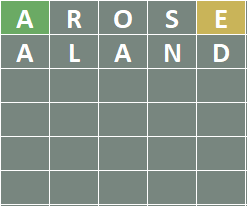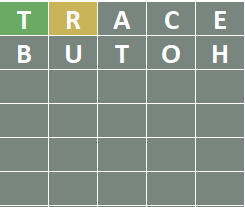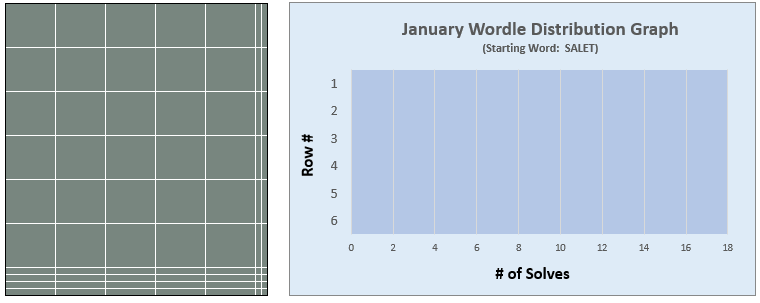|
SmartyBot
|
|
|
SmartyBot
|
|
|
SmartyBot is my name for a "bot" I created.
SmartyBot solves Wordle puzzles. Actually, it's not a "bot" as much as it is just an Excel Workbook that uses VBA macros. I wrote it last year, when I was regularly playing Wordle each day. Last year, the NY Times had just introduced WordleBot and I was fascinated with this program. I loved seeing the analysis each day of my most recent puzzle. I loved seeing the, often usual, probing words WordleBot came up with, to help narrow down the solution for that day, and how it arrived at determining those probing words. And then a month or so later, when the NY Times reduced access to WordleBot, and only allowed those with a paid NY Times subscription to use it, that gave me the incentive to write my own "bot." (I did not want to pay for a subscription simply to be able to access WordleBot.) It took many hours, over a period of several months, to code the entire program. I'm quite proud of it. It does a great job solving Wordle puzzles. Smarty can solve Wordle
puzzles that are four, five, six and even seven letters in length, so
it's not just limited to the standard 5-letter Wordle puzzles. It
can analyze games or an entire dataset in "batch mode." For
example, I can feed it last month's puzzles and ask it to solve all of
them, one after another, in succession, as I make myself a cup of coffee.
When it solves puzzles in batch mode it keeps track of every move of
every solve, including the number of possible words left after each
move, for later viewing and analysis. Smarty can also take a user-selected word
and figure out the best reply to each of the 243 possible color patterns
it might receive. (Okay, technically, that's not correct.
Yes, 3^5 (three possible choices and five letters) is 243 but you can
never, for example, receive four green tiles and one yellow tile.)
As an example, with the original 2,315 word
dataset, if the opening word SALET is used and if the feedback
received is no colored boxes at all, Smarty determined the best
second row guess is
the word ROUND. (WordleBot gives ROUND a Skill Rating of
98. Again, note, however, that WordleBot is basing this reply with
a different dataset.) |
 After AROSE received the green A and the yellow E, the following 11 words are still possible: ABBEY, ABLED, ADEPT, AGENT, AHEAD, ALIEN, ALLEY, AMEND, ANGEL, ANNEX, and APNEA. Smarty finds the probing word ALAND, which will guarantee a solve on Row 3. (Two other probing words which will also guarantee a Row 3 solve are ALANT and UNLED. |
 After TRACE received the green T and the yellow R, the following 11 words are still possible: THIRD, THORN, THROB, THROW, THRUM, TORSO, TORUS, TUMOR, TURBO, TUTOR, and TWIRL. Smarty finds the probing word BUTOH, which is the only word guaranteed to solve the puzzle by Row 3. |
|
| Below are a few screenshots of the various worksheet tabs. Click any of the thumb-sized graphics for a larger view. |
